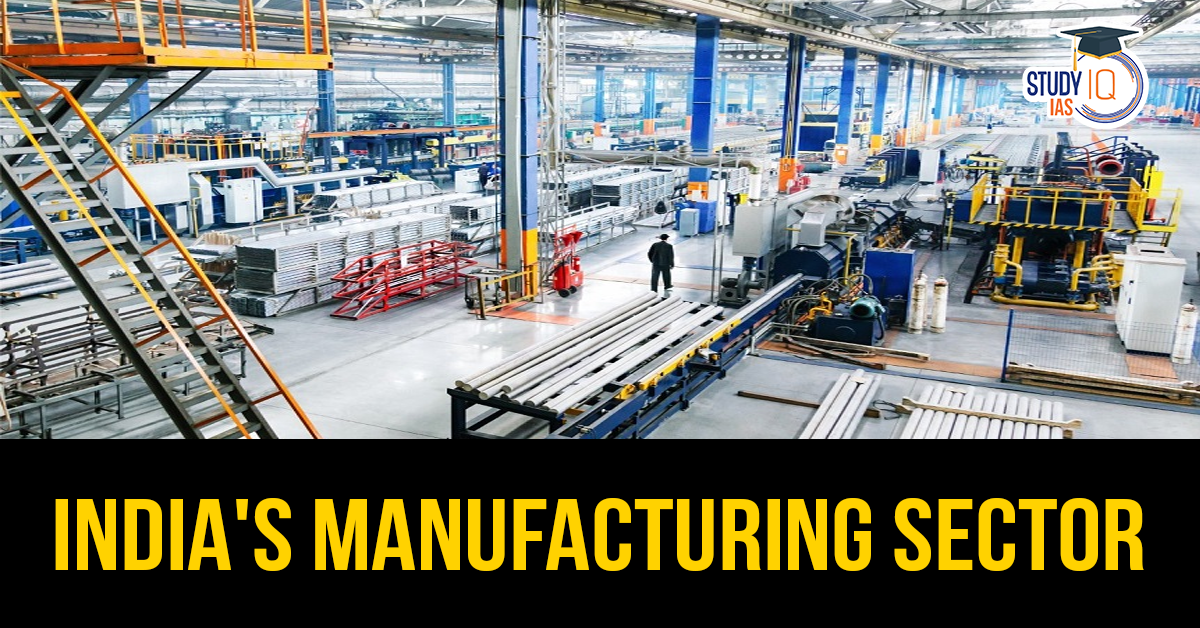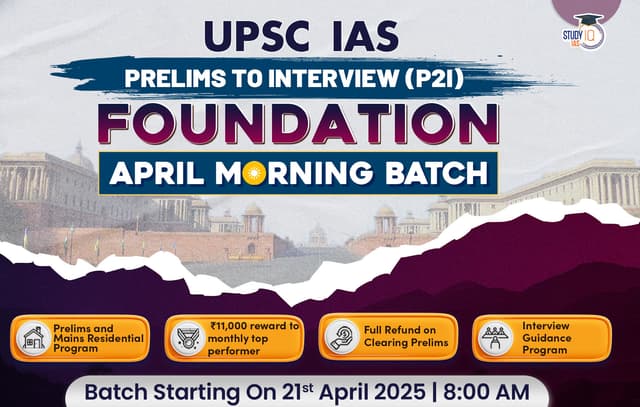Table of Contents
India’s Manufacturing Sector Growth and Performance: Insights from ASI 2022-23
- Impressive Sectoral Growth: Manufacturing output grew by 5% in 2022-23, with GVA increasing by 7.3%.
- PLI-covered sectors like basic metals, petroleum products, food products, chemicals, and motor vehicles contributed 58% to total manufacturing output, registering an output growth of 5%.
- The recovery from the COVID-19 pandemic disruptions is evident, with performance surpassing pre-pandemic levels.
- PLI Scheme Impact: The PLI scheme has enhanced productivity in sectors such as:
- Mobile manufacturing
- Electronics
- Automobiles
- Pharmaceuticals
- Textiles
- This scheme underscores India’s ability to align policy support with industrial growth.
Challenges in the Manufacturing Sector
- Rising Input Costs: Input prices surged by 4% in 2022-23, leading to a notable gap between output growth (21.5%) and GVA growth (7.3%).
- Import dependency for raw materials exacerbates the cost pressures.
- Regional Imbalances: Industrial activity is concentrated in five states — Maharashtra, Gujarat, Tamil Nadu, Karnataka, and Uttar Pradesh — which collectively account for:
- 54% of total manufacturing GVA
- 55% of employment
- Other regions lag in development, limiting nationwide manufacturing growth.
Opportunities for Growth and Expansion
- Extending PLI Coverage: Labour-intensive sectors such as apparel, leather, footwear, and furniture can benefit from PLI expansion.
- Sunrise industries like aerospace, space technology, and Maintenance, Repair, and Overhaul (MRO) hold immense growth potential.
- Focus on capital goods to reduce import dependency and promote domestic capabilities.
- Boosting MSMEs: MSMEs contribute 45% of India’s manufacturing GDP and employ 60 million people.
- Tailoring PLI incentives for MSMEs by lowering capital investment thresholds and production targets could enable better integration into value chains.
- Increasing Women’s Workforce Participation: Women’s participation in manufacturing could boost output by 9% (World Bank estimate).
- Infrastructure development near factories, such as hostels, dormitories, and childcare facilities, is essential to enhance inclusivity.
- Promoting Green and Advanced Manufacturing: Encouraging green manufacturing and R&D in advanced technologies can enhance sustainability and competitiveness.
Policy Recommendations for Overcoming Challenges
- Addressing Input Costs: Simplify import tariffs into a three-tier system:
- 0-2.5% for raw materials
- 5-5% for intermediates
- 5-7.5% for finished goods
- This strategy could reduce input costs, enhance competitiveness, and improve integration into global value chains.
- Reducing Regional Imbalances: Encourage state-level participation in implementing reforms related to land, labour, power, and infrastructure.
- Invest in underdeveloped regions to balance industrial growth.
- Improving Ease of Doing Business: Streamline regulatory frameworks to attract domestic and foreign investments.
- Reduce the cost of doing business to enhance global competitiveness.
Future Prospects: Towards a Developed Economy
- With sustained efforts, the manufacturing sector’s share in GVA could rise:
- From 17% currently to 25% by 2030-31.
- Further to 27% by 2047-48, aligning with India’s vision of becoming a developed economy.
- The sector’s transformation will require leveraging policy initiatives like the PLI scheme, fostering inclusivity, and enhancing domestic capabilities.


 Growth in Gold Loans and NPAs, Reasons a...
Growth in Gold Loans and NPAs, Reasons a...
 How RBI Responded To Global Trade War Ch...
How RBI Responded To Global Trade War Ch...
 Why Confidence in US Dollar is Falling?
Why Confidence in US Dollar is Falling?





















